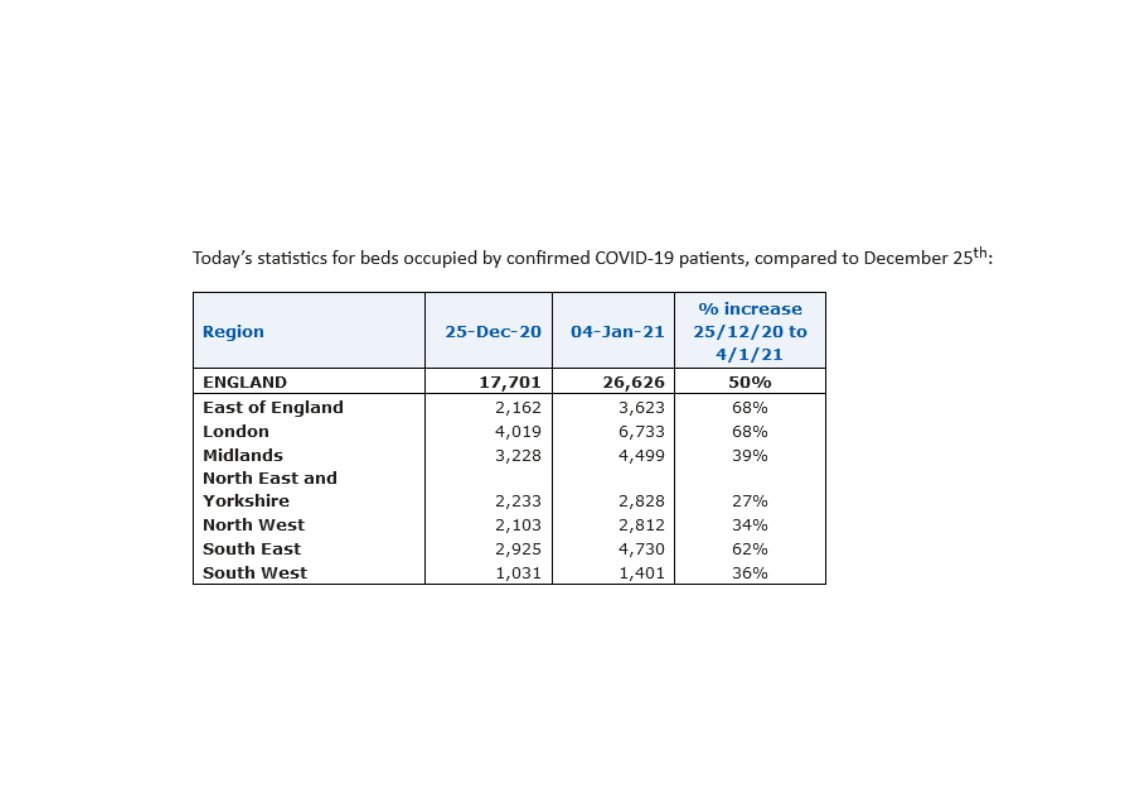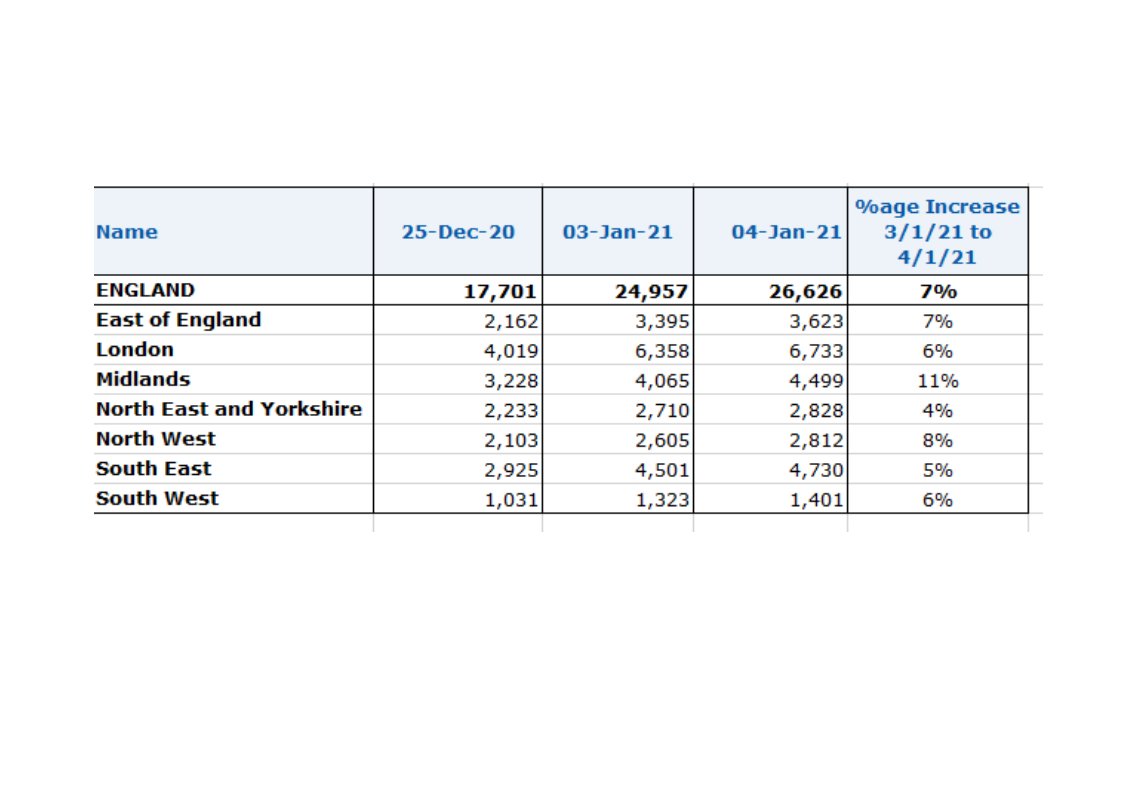
1/8 Speaking to NHS trust leaders across country and looking at today’s statistics on beds occupied by COVID patients, it's clear we have now reached a critical point. Immediate decisive action is now needed to stem rapidly rising rate of infections, hospital admissions & deaths 

2/8 Trust leaders are clear about cost & impact of tighter restrictions. But, to prevent significant numbers of unnecessary deaths, reduce patient harm and give NHS best chance of treating all patients who need care, Govt must now immediately tighten current tier system rules.
3/8 Government will announce its new plans this evening. NHS trust leaders are insistent that any tightening should be immediate and decisive. Current tier 3 rules are insufficient and tier 4 rules appear to just slow down the rate of increase in Covid transmission, not cut it.
4/8 Trust leaders are also worried about the time lag between any new measures being announced, and the impact on reducing hospital admissions. As today's new figures, just published, show, hospitals are filling up with Covid patients at a deeply alarming rate.
5/8 In 10 days since Xmas, we’ve seen nearly 9,000 more Covid patients in hospital beds. That’s equivalent to 18 hospitals full of new Covid patients. Any changes must have a significant impact as quickly as possible. Half measures at this point would be very dangerous. 

6/8 The new variant has changed the rules of the game. We cannot continue on the current trajectory and must react accordingly. Last Spring, with everyone meticulously following tight rules, we successfully and rapidly cut transmission rates. That’s what we all need to do again.
7/8 Today’s news on the first Oxford Astra Zeneca vaccine doses being administered provides a really important, positive, context here. This genuinely is one more, time limited, push to get through the next few months.
8/8 Today's covid-19 bed occupancy figures show another c1,650 rise on yesterday. Particularly worrying are 11% increase in Midlands and 8% rise in the North West. These are big increases beyond London, the South East and the East of England which have also seen further rises. 

• • •
Missing some Tweet in this thread? You can try to
force a refresh



